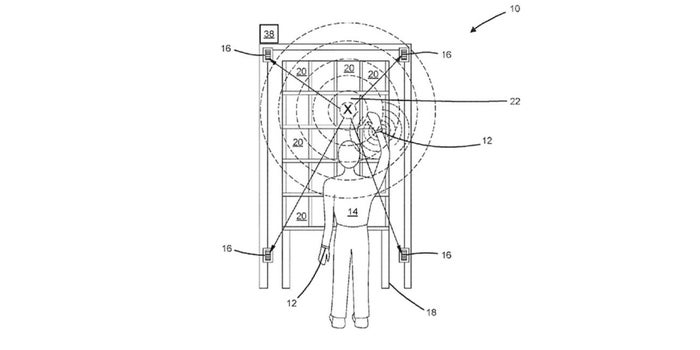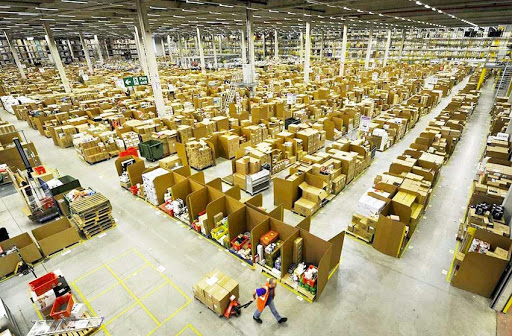Amazon’s Warehouse Wristbands

In 2018, Amazon filed patents for wristbands that would track the location and hand movements of employees in their warehouses. Has the pursuit for efficiency come at too high a cost?
What are you doing with your hands right now? Patents filed by Amazon in 2018 attempt to answer this question for their warehouse employees. The patents are for the design of wearable wristbands which can both track a worker’s location and hand movements. This technology has the potential to increase the efficiency of warehouses at a time when online orders are growing, and customers are increasingly promised faster delivery times. However, capturing data on employee’s physical movements raises questions around if the loss of personal privacy is worth it.
Location tracking of employees is nothing new. However, coupling this data with detailed recordings of how employees move their hands is entering uncharted territory in the world of people analytics –physical monitoring of employees. Amazon has positioned this technology as a tool to increase operational efficiencies within their warehouses. The patent states that the existing tools for tracking inventory bin locations is uneconomical and inefficient. According to Amazon, rather than equipping employees with handheld scanners, which are commonly used in inventory management in e-commerce, wristbands would allow employees to “free up their hands from scanners and their eyes from computer screens”. Further, the technology allows the wristband to send pulse signals to the employee, giving them feedback on what direction to move their hand in to reach the inventory bin they’re looking for. The system can also determine if a worker has picked up an item from the correct bin and placed it in the correct location.

From Amazon’s perspective, it makes a lot of sense to invest in this type of innovation. Amazon has been at the forefront of developing innovations that will increase the efficiency in their warehouses – from building algorithms that design warehouse layouts to manufacturing robots that help fulfill orders. Further, given the company’s value proposition is centered around increasingly faster delivery speeds for customers, Amazon warehouses face enormous pressure to find ways to increase efficiency and meet delivery promises despite the volume of orders continuously growing. By implementing technology like the one outlined in the patent, workers will hopefully be able to both restock the warehouse faster by putting items in the correct bins more efficiently and find items for customer orders more quickly.

However, despite the arguments for why this technology will improve efficiency in the Amazon warehouses, it raises concerns around the company is crossing a line and compromising employees’ privacy. These wristbands may not only capture hand motions in relation to official work. They may also capture highly private data for employee hand movement and location such as how often a worker scratches, when a person slows down or when an employee takes a bathroom break.
It’s not clear if Amazon has yet to implement this technology across its workforce. However, given that workers have been unable to unionize and the high demand for jobs in the warehouses, it seems unlikely that employees would be able to have any significant bargaining power over increasing surveillance technology.
Weighing the pros and cons of efficiency vs. privacy is not a new concept in human capital management. This application continues to raise the question of whether the efficiency gained from the wristbands is outweighed by the unprecedented surveillance of employees’ every hand motion. Although warehouses may increasingly be equipped with high-tech robots, viewing employees in a similar way is concerning and may lead to the overweighting of incremental improvements in efficiency at the expense of personal privacy.



Apart from a violation of employee privacy, this feels like a de-humanization of employees, who are treated as a monitored and paced pair of hands and legs. If Amazon wants a tool that is able to precisely locate and move objects around a warehouse, I believe the company should invest in robots. I thought that the times where employees were treated as interchangeable and emotionless resources/inputs where over, but I might be wrong… ☹
Well articulated Elisa! I share your concern around privacy of the data, but I wanted to dig deeper into what use cases have they looked at. While I don’t with this approach at the first glance, I do think there is merit in thinking of this tool as a productivity enhancer. The device can be modified to help individuals understand their mistakes and find more efficient ways to work. This would require a clear contract and understanding with leadership. Workers should be able to see their personal data for personal improvement, but management should only get an overview to act on changes they can make to improve the whole workforce’s effectiveness. Also, in response to the previous comment, even investments in robotics have been viewed negatively since they tend to replace front-line workers. In contrast, investing to help employees increase their worth within the organization by freeing up time spent in correcting mistakes and upskilling might be a positive innovation.
Very interesting, thanks for sharing!
While I appreciate the potential for productivity improvement, I think this is where laws around worker’s rights need to adapt to innovation. The U.S. labor law framework for safety standards need to respond to this movement towards automation and the physical and mental toll that it can take on workers. The idea of a wristband that sends “pulses” to workers when they are in an incorrect bin could turn into something much worse, and regulation should step in before a line is crossed. I want automation to continue to happen, but it needs to be done in partnership with government to make sure workers are treated fairly.